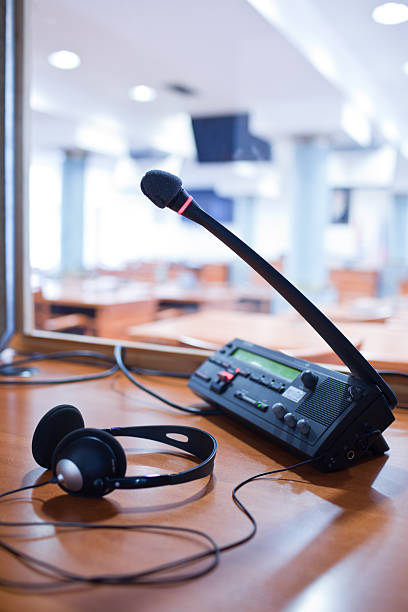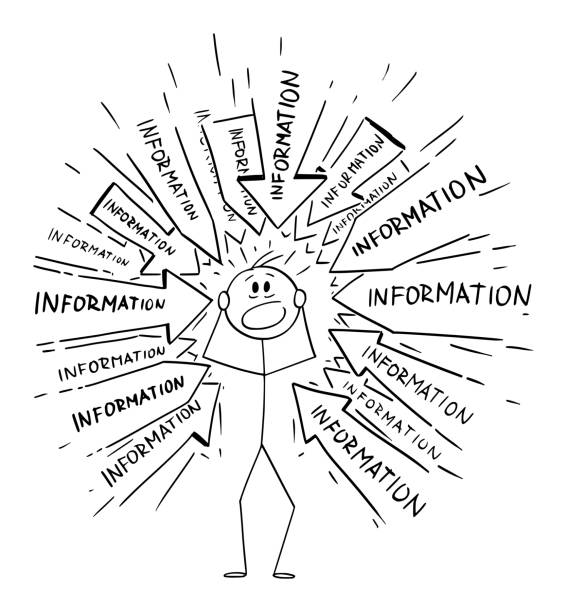Understanding Consecutive Interpretation: A Simple Guide

Interpretation and translation are the key tools for effective communication across language groups. These practices allow people, businesses, and organizations from different language backgrounds to communicate, collaborate, and understand one another.
- Translation: The process of converting written text from one language into another.
- Interpretation: The act of translating spoken language in real-time between speakers of different languages.
Whether it's during business meetings, big events, or high-level diplomatic gatherings, interpreting makes communication possible. By giving everyone the same level of access to information, interpretation actually also promotes cultural understanding and inclusivity.
Choosing the right type of interpreting service depends on the setting you find yourself in.
Of the many methods available, consecutive interpretation stands out as an economical choice,because it doesn't happen in real-time.
Defining Consecutive Interpretation
Consecutive interpretation refers to the process where an interpreter listens to the speaker's message, then relays it in the target language - after the speaker has paused.
It is also known as a "listen and talk" technique, because the interpreter takes turns with the speaker to ensure that everyone can effectively communicate, despite the lack of a common language.
This method has gained a popular reputation, primarily for its accuracy.
Unlike real-time interpretation, consecutive interpretation allows the interpreter more time to grasp, comprehend, and convey the message with deeper consideration.
This ensures that the message retains its original intent and meaning when interpreted.
In consecutive interpretation, the interpreter waits for the speaker to finish talking before interpreting what's been said. Usually sitting near the speaker, the interpreter will generally use a pen and notebook (or a digital equivalent), to jot down key points.
This method includes three main actions:
- Listening attentively
- Taking notes
- Sharing the interpretation
Consecutive interpretation is often used in small group discussions and legal events like court trials, testimonies, and adjudication.
To bolster their accuracy, some interpreters in these situations will use an official transcript made by court reporters as a reference. Reading this transcript can improve contextual understanding, which can make interpretations more precise (not to mention faster), than when relying solely on personal notes.
This practice aligns with the guidelines mentioned in a bilingual court interpreting test preparation manual which offers further insight into the methods and best practices of consecutive interpreting.
Difference Between Consecutive Interpretation and Simultaneous Interpretation
Both consecutive interpretation and simultaneous interpretation serve the essential purpose of bridging the gap between different languages, but they do so in distinct ways and under varied circumstances.
Consecutive Interpretation
In consecutive interpretation, the interpreter waits patiently while the speaker delivers a segment of their speech or message.
Once the speaker pauses, the interpreter then conveys the message in the target language. This approach ensures that the interpreter fully grasps the message's context and nuances, leading to a potentially more accurate interpretation.
Consecutive interpretation is typically seen in settings like small meetings, legal proceedings, or one-on-one discussions. Here, the interpreter often relies on a notepad and pen to jot down crucial points or symbols that aid in the interpretation process.
Simultaneous Interpretation
As the name suggests, this approach demands immediate interpretation, with the interpreter working concurrently with the speaker.
Given its instantaneous nature, simultaneous interpretation is more challenging than its consecutive counterpart.
This method of interpretation is common at larger gatherings like international conferences, seminars, or televised broadcasts.

Simultaneous interpreters sit in soundproof booths, using advanced audio equipment to listen to the source language and immediately relay the interpretation into the target language.
Simultaneous Interpreters often rotate in pairs, ensuring they remain fresh and mentally alert, as the task requires swift cognitive shifts to listen, understand, and interpret real-time.
How Does Consecutive Interpretation Work?
Consecutive interpretation is a unique method that facilitates clear and accurate communication between individuals who speak different languages.
As mentioned earlier, unlike simultaneous interpretation where the interpreter translates in real-time, consecutive interpretation involves the speaker and interpreter taking turns.
Here's how the process typically unfolds:
1. Speaker Begins: The speaker begins by conveying a specific portion of their message. This can be a few sentences or even a full paragraph, depending on the context and the interpreter's preference.
2. Speaker's Pause: After conveying a part of their message, the speaker pauses, allowing a moment for the interpreter to step in.
This pause is crucial because it gives the interpreter time to absorb the meaning, nuances, and tone of the original message.
3. Interpreter Takes Over: The interpreter, having listened carefully to the speaker, now relays the message in the target language.
They aim to capture not just the literal meaning but also any emotional undertones and implicit messages, ensuring the audience receives a comprehensive understanding.
4. Cycle Continues: Once the interpreter finishes, the speaker resumes with the next portion of their message. This cycle of speaking and interpreting continues until the entire message has been delivered and interpreted.
Additional Considerations:
- Memory and Note-taking: The interpreter often relies on both memory and quick note-taking to ensure accuracy. Some interpreters are skilled enough to hold longer passages in their minds, while others may jot down key points as a mnemonic aid.
- Timing: Timing is very important for consecutive interpretation to work well. The pauses must be long enough to allow accurate interpretation, but short enough to maintain the flow and engagement of the conversation.
- Skill Level: Not all consecutive interpretations are the same; it can vary based on the skill level and experience of the interpreter. A seasoned interpreter will be able to handle complex discussions, multiple speakers, and even emotionally charged situations with ease.
The beauty of consecutive interpretation lies in its deliberateness.
By allowing pauses, it ensures that messages are relayed comprehensively and accurately, making it particularly effective for situations that require in-depth understanding, like legal proceedings or detailed discussions.
Challenges of Consecutive Interpretation
Consecutive interpretation, while an invaluable tool for facilitating cross-cultural communication, is not without its own set of challenges.
Both for the interpreter and the parties involved, the process can be demanding.
Here's a look at the complexities and difficulties of consecutive interpretation:
Memory Pressure
One of the most significant challenges in consecutive interpretation is the pressure on the interpreter's memory.

Unlike simultaneous interpretation, where interpreters translate in real-time, consecutive interpretation requires them to remember chunks of speech before interpreting. The longer the segment, the more difficult it becomes to retain every detail and expression.
Maintaining Flow
The stop-and-start nature of consecutive interpretation can disrupt the natural flow of a conversation or presentation.
Extended pauses for interpretation might lead to loss of audience engagement or the essence of a speaker's point getting lost in breaks.
Note-taking Difficulties

While taking notes can be a lifeline for consecutive interpreters, it also presents challenges. Creating a system that efficiently captures the essence of the message in a short time frame is a skill in itself. Moreover, relying too heavily on notes can lead to missing out on non-verbal cues.
Extended Duration
Consecutive interpretation naturally extends the length of proceedings. A meeting that might take one hour in a single language could stretch to two hours with interpretation. This extension can lead to fatigue for all parties involved, potentially reducing concentration and effectiveness over time.
Emotion and Tone
Capturing the speaker's emotion and tone accurately can be a daunting task. Consecutive interpreters must not only convey the message's content but also its intent and the speaker's feelings, all while switching between languages.
Multiple Speakers
Handling rapid switches between multiple speakers, each with their speaking styles, tones, and paces, can be disorienting for interpreters. Keeping up with sudden changes and ensuring accurate interpretations for each speaker adds another layer of complexity.
Consecutive interpretation is a powerful means to bridge language gaps, as it demands a high level of skill, patience, and adaptability from interpreters. Recognizing these challenges helps in appreciating this complicated type of interpretation and the professionals who master it.
When is Consecutive Interpretation Most Effective?
Business Engagements
Global expansion means diving into multilingual markets. Whether sealing a deal or strategizing, pausing for interpretation ensures everyone's on board with the same vision.
Medical Consultations
Seeking healthcare abroad can be daunting, especially with a language difference. Interpreting ensures patients fully grasp their treatment plans and medical advice.
Court Proceedings
Legal matters can be complex. For non-native speakers, interpreters can make court sessions comprehensible, ensuring justice isn't lost in interpretation.
Press Interviews
For journalists interviewing non-native speakers, consecutive interpretation ensures smooth communication. Although the back-and-forth can extend the duration, it guarantees clear and accurate exchanges.

Human Resource Sessions
Multinational companies often have diverse teams. Consecutive interpretation can standardize HR policies, ensuring uniform understanding. It aids in appraisals, promotions, and keeping global branches in sync.
Parent-Teacher Conferences
Language shouldn't be a barrier to understanding a child's academic progress. With interpreters, parents can confidently engage in these essential discussions.
Business Travels
When exploring opportunities abroad, interpreters can be invaluable companions. They ease communication, making foreign meetings fruitful.
Professional Sports
In global events like the Olympics, athletes often face language barriers. Interpreters ensure they understand rules, communicate with officials, and are able to immerse themselves fully in the event.
What are the Advantages of Consecutive Interpretation?
Consecutive interpretation, while presenting its unique set of challenges, comes with an array of advantages that can significantly enhance communication across linguistic barriers.
Here are some of its key benefits:
1. Personal Touch- The pauses and engagement in consecutive interpretation allow for a more personable and connected interaction. It enables the interpreter to pick up on nuances and sentiments, ensuring emotional elements are accurately conveyed.
2. Accuracy Over Speed- Unlike simultaneous interpretation, where speed is important, the pause-and-interpret nature of consecutive interpretation often results in more accurate interpretations. The interpreter has the chance to consider the best phrasing and ensure clarity.
3. Requires Minimal Equipment- Where simultaneous interpretation often demands specialized headphones and booths, consecutive interpretation is far simpler, requiring just the interpreter themselves, and sometimes a notepad.
4. Adaptable to Various Settings- From business meetings to courtrooms, and from medical consultations to casual conversations, consecutive interpretation fits effortlessly into diverse scenarios.
5. Ideal for Small Groups- In settings with limited participants, consecutive interpretation proves highly effective, ensuring everyone is on the same page without the need for technological intervention.
6. Comprehensive Understanding- The back-and-forth nature of consecutive interpretation ensures participants to fully grasp the concepts before moving on. This is especially beneficial in detailed discussions or negotiations.
7. Immediate Feedback- The dialogue-like structure allows for instant clarifications. If something's unclear, it can be addressed on the spot, preventing miscommunication.
8. Culturally Sensitive- Interpreters often bring cultural awareness into their interpretations, ensuring that cultural nuances and context are appropriately respected and conveyed.
9. Cost-Effective- Without the need for equipment and multiple interpreters (as might be needed in simultaneous settings), consecutive interpretation can often be more budget-friendly.
10. Builds Trust and Rapport- Seeing and hearing an interpreter directly fosters a sense of trust, especially in personal or sensitive discussions. It humanizes the interpretation process, creating a bond between speakers of different languages.
CONCLUSION
Navigating the maze of global communication isn't always a walk in the park! But hey, that's where consecutive interpretation comes into play, making sure nobody's left scratching their heads.
From business dialogues, media interactions, private discussions, and medical consultations to HR meetings, parent-teacher conferences, legal consultations, insurance deliberations, sports, and even tourism – consecutive interpretation finds its place in diverse scenarios.
If you're an organization looking to venture into international territories, or seeking to collaborate with foreign counterparts, consider the benefits of consecutive interpretation.
The blend of accuracy, personal touch, and adaptability that it brings can be indispensable.
For a smooth experience, it's very important to rely on trusted providers of interpreting services.
Whether you're searching for experts in legal interpreting or need assistance during international business meetings, Interpreter.io offers comprehensive interpreter management solutions tailored to your needs.
Our platform ensures that you receive high-quality services, leaving no room for miscommunication or misunderstanding.
Don't let language stand in the way of your message or mission. Discover more about how Interpreter.io can support your interpretation needs and bridge the communication gap today.
FAQ’S:
What is the basic concept of consecutive interpretation?
Consecutive interpretation is a method where the speaker pauses after conveying a portion of their message, allowing the interpreter to interpret and convey that segment to the audience before moving on.
How do interpreters manage to remember long segments in consecutive interpretation?
Professional consecutive interpreters develop strong note-taking techniques and possess an exceptional memory to recall details accurately.
Are there specific events or settings where consecutive interpretation is particularly beneficial?
This method is well-suited for small business meetings, interviews, court testimonies, medical consultations, and any situation where a more personal and direct connection is beneficial.
Does consecutive interpretation disrupt the flow of a conversation?
While there are pauses for interpretation, experienced interpreters and speakers collaborate to ensure the flow remains as natural as possible.
What qualifications should a good consecutive interpreter possess?
Apart from fluency in both languages, they should have training in interpretation techniques, cultural awareness, and possibly expertise in the specific subject matter being discussed.
Is consecutive interpretation more time-consuming than simultaneous interpretation?
Yes, since the message is effectively conveyed twice—once by the original speaker and once by the interpreter. The event's duration might be extended due to this method.
Can consecutive interpretation be done remotely?
Absolutely! With modern communication tools and platforms like Interpreter.io, consecutive interpretation can be provided over video or audio calls, making it adaptable to virtual meetings and events.
What's the difference between translation and consecutive interpretation?
Translation typically refers to the written conversion of text from one language to another, while consecutive interpretation deals with oral communication.
